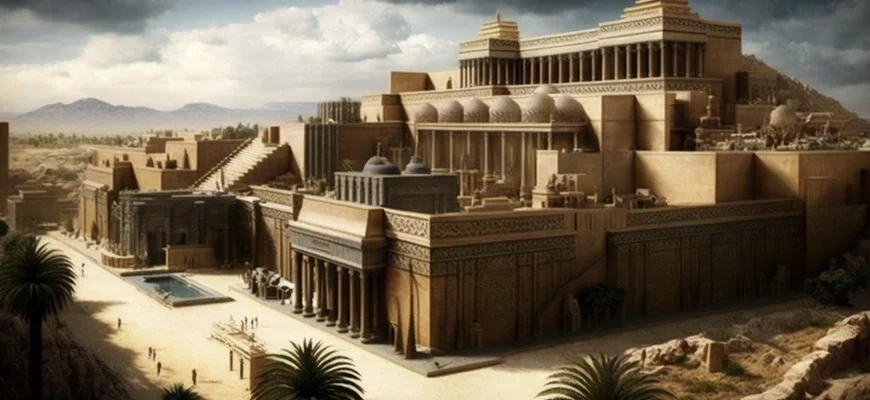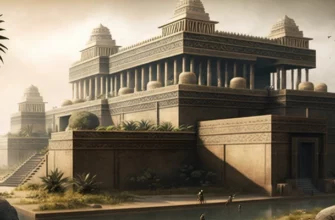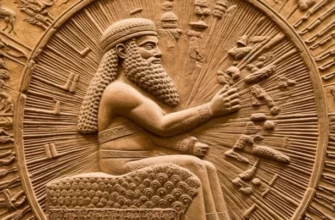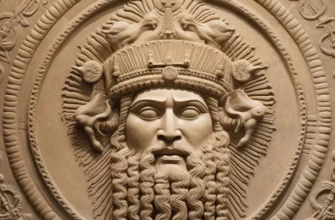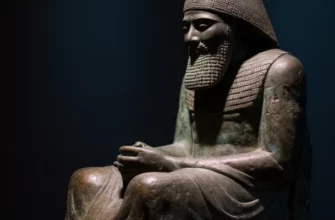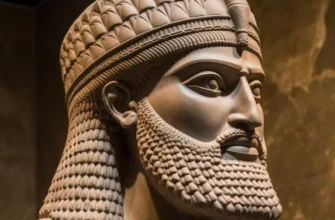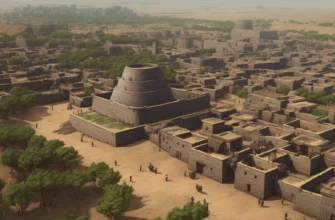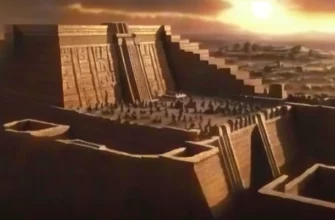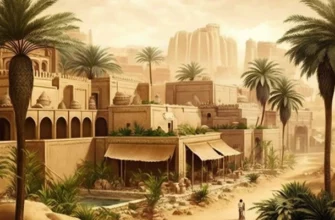Ancient Babylon was one of the largest cities in the ancient world and the center of the Babylonian Empire. The history of this city dates back to the third millennium BC. It is known that Babylon was founded by King Hammurabi in the 18th century BC.
The Babylonian Empire became one of the largest empires of its time, thanks to its successful economy and military strategy. Science and mathematics developed in Babylon. Babylonian mathematicians made a significant contribution to the development of geometry and algebra. They created the so-called Babylonian number system, which is based on 60.
Religion and mythology were an integral part of Babylonian culture. There were several deities, among which the main one was Marduk, the god of heaven and earth. He played an important role in myths and religion. Babylon was also home to one of the most famous buildings of that time – the Babylonian Ziggurat, which was dedicated to Marduk.
The art of Babylon had a significant influence on the development of culture. The main forms of art were sculpture and architecture. In Babylon, magnificent palace buildings were created, whose walls were decorated with bas-reliefs. There are also some well-known signs and paintings on the walls that showed the everyday life of the Babylonians.
The politics and social structure of the Babylonian Empire were very complex. The central authority was the king, who ruled the entire empire and had great power. The king’s power was secured by a large army and a strong bureaucracy. In addition, Babylon had a supreme council composed of renowned sages and clergy, which dealt with decisions on domestic and foreign policy.
The social structure of Babylon was quite complex and had many levels. The highest social group was the royal family and the largest feudal lords. The second level consisted of landowners’ families and wealthy merchants. The middle class consisted of artisans and traders. The lowest level consisted of slaves and soldiers.
At the end of the 7th century BC, Babylon was captured by the Assyrian king Tiglath-Pileser III, which led to the fall of the Babylonian Empire. However, Babylon continued to exist as a city and was a significant center of culture and science until the arrival of the Arab conquerors in the 7th century AD.
As a result, Ancient Babylon was an important center of culture, science, and politics in the Ancient World. Its legacy lives on to this day, as evidenced by its magnificent architectural structures and scientific discoveries.
History of Babylon
Babylon is one of the oldest cities in the ancient world, founded around 2300 BC. Over the centuries, the city became the center of various states and empires, including the Babylonian Empire, which existed from the 18th to the 6th century BC.
Babylon was known for its architecture, in particular its huge architectural structures, such as the High Temple of Marduk and the Tower of Babylon. The city also had a supreme council that dealt with decisions on domestic and foreign policy issues.
At the end of the 7th century BC, Babylon was captured by the Assyrian king Tiglath-Pileser III, which led to the fall of the Babylonian Empire. However, Babylon continued to exist as a city and was a significant center of culture and science until the arrival of the Arab conquerors in the 7th century AD.
The legacy of Ancient Babylon lives on today in cultural and scientific monuments that have witnessed great history and made a significant contribution to the development of civilization.
Religion and mythology of Babylon
The religion and mythology of Babylon had a huge impact on the culture and lives of the people. The central figure was the god Marduk, who was the deity of creation and protection of the city.
Babylonian mythology included many legends and stories about gods and heroes. The most famous of these are the epic “Enuma Elish,” which tells of the creation of the world, and the legend of Gilgamesh, a demigod and ruler of Uruk who sought immortality.
The cult of religion and mythology was an important part of Babylonian life, reflected in many aspects of culture, including art, literature, and architecture. The High Temple of Marduk in Babylon was one of the greatest and richest religious buildings in the ancient world, and many architectural elements and symbols of Babylon had religious significance.
Science and mathematics in Babylon
Babylonian science and mathematics were highly advanced and had a significant impact on the development of science in later centuries. The Babylonians developed a base-60 number system, which became the basis for measuring time and angles. They also created tables with a huge number of mathematical problems, including multiplication tables and the quadratic formula.
Babylonian scientists also studied astronomy and astrology, correlating the movements of planets and stars with events on Earth and creating astronomical tables and predictions.
Many of these achievements of Babylon were preserved on clay tablets, which allowed them to be studied and used in later science. All this indicates that Babylon was one of the most developed centers of science and mathematics in the ancient world.
The art of Babylon
The art of Babylon was luxurious and diverse. The Babylonians created reliefs, statues, paintings, and other works of art that decorated temples and palaces.
The main materials used to make art were clay and stone. Babylonian craftsmen made ceramics, which they decorated with intricate patterns and images. Bronze and gold items were also popular.
Particular works of art in Babylon include bulbous capitals and clay ceilings depicting gods and other mythical creatures. Sculpture, particularly statues of gods and rulers, is also an important element of Babylonian art.
Babylonian art was strongly linked to religion and mythology, so many works of art feature images of gods and stories from their lives. Overall, Babylonian art is an important part of the culture and history of this ancient city.
Politics and social structure of Babylon
The political and social structure of Babylon was quite complex. The city was ruled by a king who controlled military, political, and religious power. The king also owned significant territories within the state.
Babylon had a strict hierarchical system in which everyone had their place at the top of the social pyramid. Above all stood the king and the clergy, who played an important role in the religious life of the city. On the second level were the nobles, who held positions in the government and military structures. The third level was occupied by artisans and merchants, and the lowest level was occupied by ordinary people.
Babylon also had a famous system of laws known as the Code of Hammurabi. These laws were quite strict and provided for severe punishment for violations. However, they also protected the rights of the poor and victims of criminals.
All these factors contributed to the formation of a strong and stable Babylonian kingdom, which for many centuries remained one of the largest and most influential states of the ancient world.
Final conclusions about the Babylonian Empire
The Babylonian Empire was one of the largest and most influential states of the ancient world. The city of Babylon was a center of religion, science, and culture, as well as the location of one of the most famous wonders of the world – the tall Tower of Babylon. Babylon had a developed political and social system, with a strict hierarchical division of the population.
Babylon was also the birthplace of a number of important inventions, such as the development of mathematics, the calendar, astronomy, and medicine. The Hammurabi Code remains one of the most famous and influential documents of the ancient world.
The Babylonian Empire witnessed a number of wars and conflicts with other states, as well as a gradual decline from the 6th century BC. However, the legacy of Babylon lives on today, revealing to us the amazing history, culture, and science of the ancient world.
